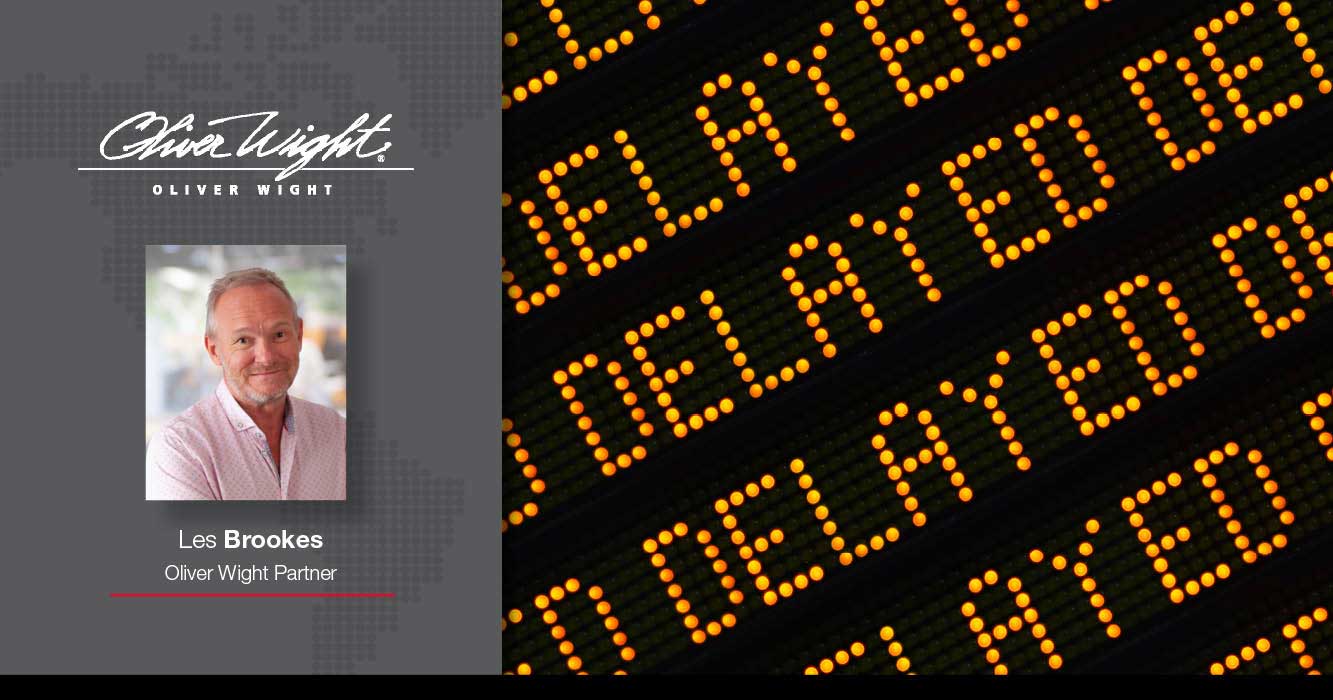Delays expected – why latest airline struggles show the post-pandemic reality
16 Oct 2023
Blog

As air travel issues still show, UK PLC is still recovering lost capacity post-pandemic. Businesses must invest in resilience and clearly communicate to manage customer expectations, as it’s clear that respect to customers and service are not equal.
The travel and hospitality industry was arguably the most impacted by the coronavirus chaos. Over three years since the chaos began, the civil aviation sector is still in a tailspin, as evidenced by hundreds of delayed and grounded planes at the end of summer.
Bosses have clearly mismanaged operations since 2020, and have not trained staff to cope with spikes in demand. And, admittedly, it has not been straightforward to second-guess when things might open up again and the appetite to travel given the rising concerns around climate impact. Clearly the tracking and measurement of assumptions – both internal and external – and the impact on the committed plans is not achieving the required quality.
But the crucial point is that people expect things to fly as smoothly as they did in 2019. Why? The reality is we should all dial down those expectations and build in contingency.
During the last weekend in September, just as people thought they could sneak away for some late summer sun after the hectic holiday period, an outbreak of COVID among air traffic staff at London Gatwick led to 50 flights to or from the airport being cancelled or diverted, leaving approximately 8,000 travellers out of position. EasyJet was forced to strike off 42 flights as a result.
Yet it was a similar story a fortnight earlier when a shortage of air traffic controllers led to flights at Gatwick being cancelled, delayed, or diverted at next to no notice. And only two weeks before that predicament – over the August Bank Holiday weekend, to boot – the UK’s air traffic control system was hit by a network failure. The regularity of large-scale problems can no longer be treated as a coincidence. So what are the assumptions about sickness, ongoing strike action in France, and so on? We need to get real.
Let’s be honest: recent flight cancellations and airport chaos are symptoms of a lack of capacity exacerbated by staff shortages. The reality is airlines and airports don’t have enough people but are reluctant to admit it.
Slow and unsteady recovery
Indeed, the airline sector stands as a poignant testament to the aftermath of the pandemic. While many might expect a seamless return to operations, the truth is that these businesses are still trying to navigate the uncertainties of the new normal. Capacity issues, partly driven by personnel shortages and logistical complications, have plagued civil aviation for at least two years. For instance, easyJet’s cancellation of hundreds of flights this summer signifies not a lack of desire to meet demand but perhaps an inability to do so confidently.
This situation should prompt questions for business leaders about the state of UK PLC. Are staff shortages and lack of skills holding back your business from delivering excellent customer service? It’s tempting to pin the problem solely on industries with visible service issues, like the frequent flight delays, yet it raises the question: is this just the tip of the iceberg? Beneath the evident challenges, do other industries also grapple with a lack of qualified personnel struggling to meet their business objectives?
Linked to this is emerging technology like artificial intelligence – what new capabilities will be required in the workplace, and will businesses really be ready to take advantage to improve productivity and service?
The material components of the supply chain have gradually returned to pre-pandemic normality, but the challenge of ensuring service excellence remains. There’s a dissonance: some industries, like the airlines, struggle to meet demand, while others might soon face an oversupply if projected demands falter.
From the customer’s perspective, this poses a conundrum. Diminished service quality is evident across the board. And when there’s a semblance of ‘normal’, one has to wonder if this is genuinely an improvement or a result of dwindling demand. Despite the constant emphasis on the importance of customer service, is the lack of investment a sign of the lack of resources rather than the lack of desire? There is, however, likely to be a lack of loyalty as surely customers who don’t receive the expected service will just buy based on price, and that becomes a vicious model to compete against.
Adjusting to a new reality
Again, using the airline sector as an example, the ripple effect of these challenges is multifaceted. Established airlines might recruit from smaller ones, offering quicker progression, but this leaves the latter bereft, exacerbating their staffing woes. Include the added headwinds of industrial action into the mix, and the panorama becomes even more complicated. The logic is simple, though: expect more disruptions and delays.
In such a scenario, do we, as consumers, still have the right to expect the gold standard of service we were accustomed to pre-pandemic? Or are we, perhaps optimistically, awaiting a return to form that might only come to fruition in the distant future?
As businesses wrestle with these questions, consumers must also recalibrate their expectations. The concept of surge pricing, especially around the holiday season, illustrates the volatile equilibrium of supply and demand. Surge pricing isn’t novel, though, whether it’s the airlines or the hospitality sector. It’s a mechanism long used in industries like manufacturing to balance supply. It’s a clear testament to the premium of agility in today’s world. And, once more, those on the other side must adjust to the reality. That’s why it pays to plan well in advance.
Moreover, consumers have tools at their disposal. For instance, apps that track flight prices can guide decisions on the optimal time to book, enabling better planning and potential cost savings. The onus, in part, falls on the consumer to navigate this post-pandemic landscape strategically.
While industries endeavour to overcome challenges and restore the gold standard of service, consumers must also adapt, realigning expectations and making informed choices. Recovery will take time. Rather than hope for a quick return to normal, we should anticipate ongoing friction and delays over the next 12-18 months. Businesses, too, need patience and pragmatism as they rebuild operations. After all, we’re all part of the journey to what we often label a “new normal”.
Author(s)
-
